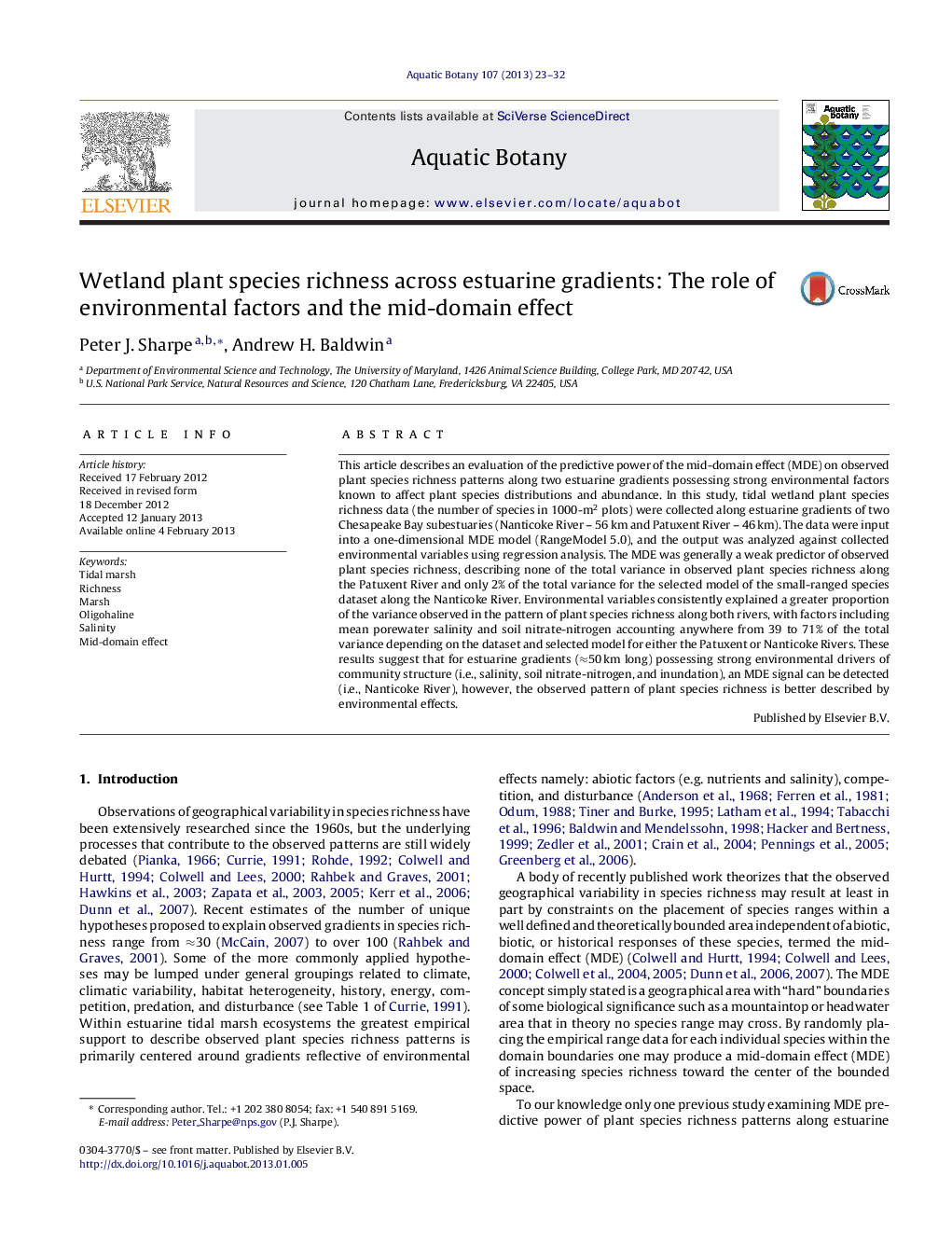| Article ID | Journal | Published Year | Pages | File Type |
|---|---|---|---|---|
| 4527916 | Aquatic Botany | 2013 | 10 Pages |
This article describes an evaluation of the predictive power of the mid-domain effect (MDE) on observed plant species richness patterns along two estuarine gradients possessing strong environmental factors known to affect plant species distributions and abundance. In this study, tidal wetland plant species richness data (the number of species in 1000-m2 plots) were collected along estuarine gradients of two Chesapeake Bay subestuaries (Nanticoke River – 56 km and Patuxent River – 46 km). The data were input into a one-dimensional MDE model (RangeModel 5.0), and the output was analyzed against collected environmental variables using regression analysis. The MDE was generally a weak predictor of observed plant species richness, describing none of the total variance in observed plant species richness along the Patuxent River and only 2% of the total variance for the selected model of the small-ranged species dataset along the Nanticoke River. Environmental variables consistently explained a greater proportion of the variance observed in the pattern of plant species richness along both rivers, with factors including mean porewater salinity and soil nitrate-nitrogen accounting anywhere from 39 to 71% of the total variance depending on the dataset and selected model for either the Patuxent or Nanticoke Rivers. These results suggest that for estuarine gradients (≈50 km long) possessing strong environmental drivers of community structure (i.e., salinity, soil nitrate-nitrogen, and inundation), an MDE signal can be detected (i.e., Nanticoke River), however, the observed pattern of plant species richness is better described by environmental effects.
► MDE was a weak predictor of plant species richness for both study rivers. ► A minor MDE effect was observed in the more pristine Nanticoke River gradient. ► Environmental effects were the best determinants of species richness for both rivers. ► Soil porewater salinity was the most consistent predictor of plant species richness.
